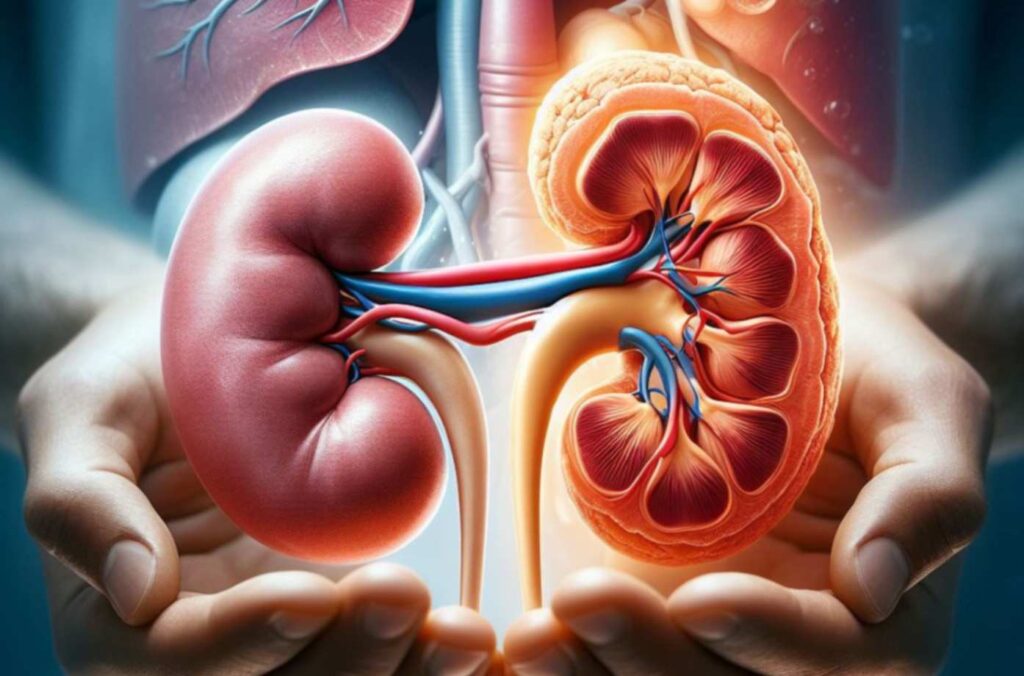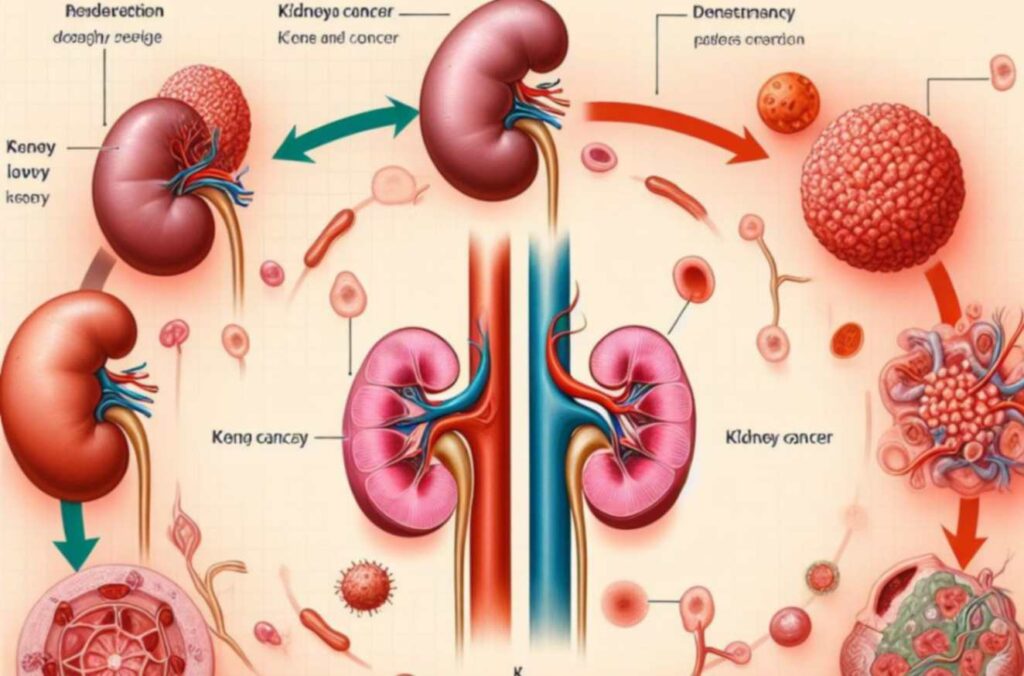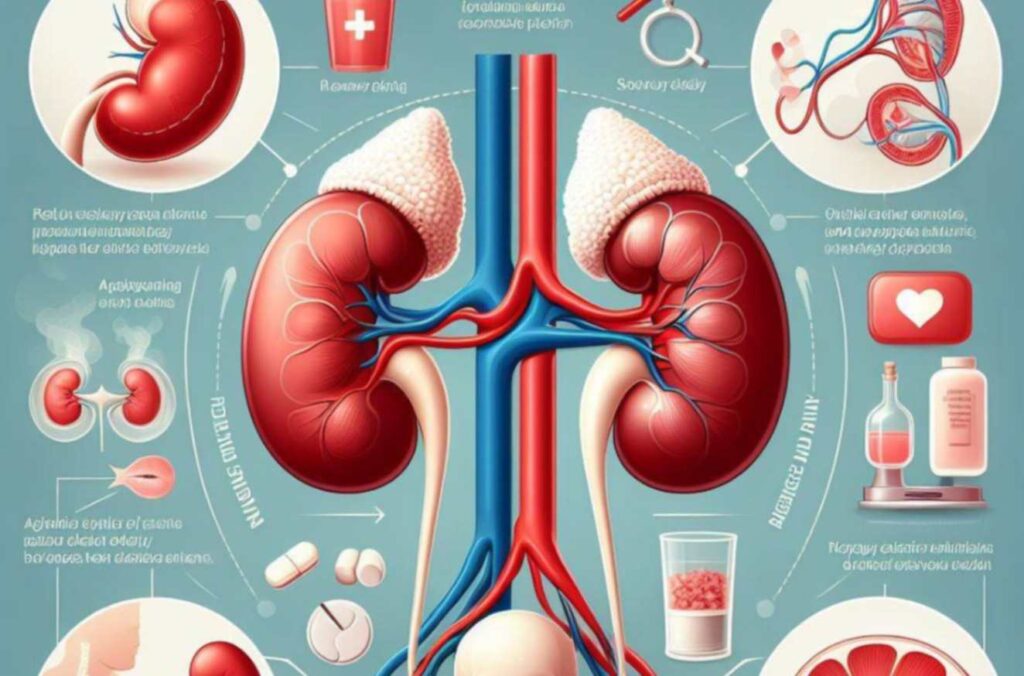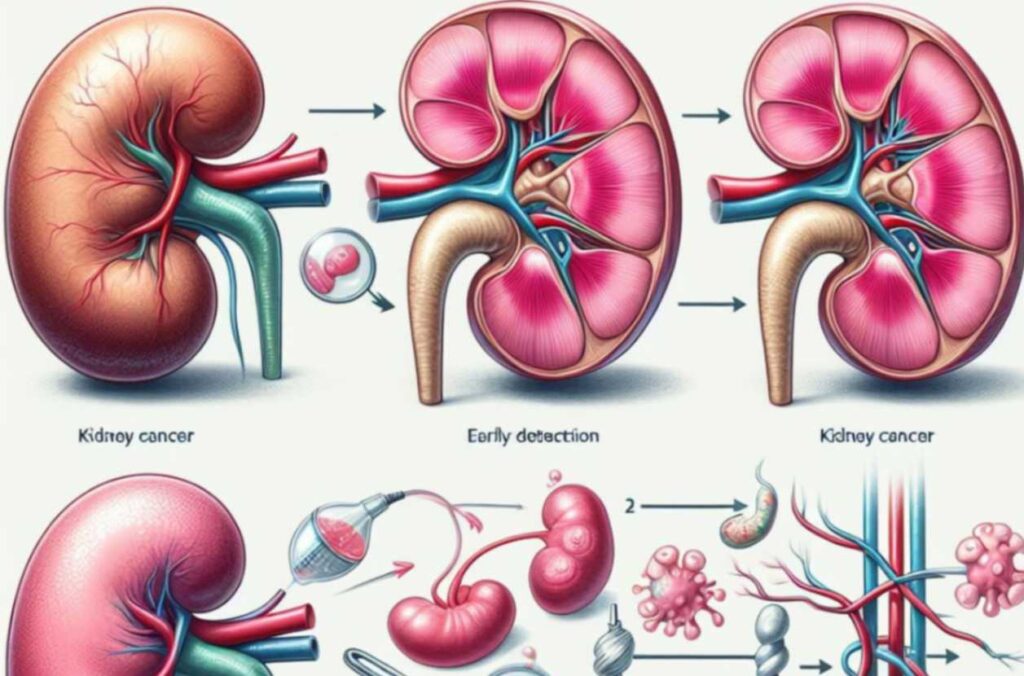Kidney cancer, also known as renal cell carcinoma (RCC), is a disease that affects the kidneys, which are essential organs required for eliminating waste from the blood. Because kidney cancer affects so many individuals worldwide, it is important to understand about it. The causes, signs, findings, possible treatments, and visualization of kidney disease are totally canvassed in this article. Keep perusing to find significant data about this common, however generally misjudged, illness.
1: Risk factors for kidney cancer:
Anybody can be impacted by kidney cancer; it doesn’t discriminate. On the other hand, a few things may make this syndrome more likely to manifest. It is essential to comprehend these risk factors in order to diagnose and avoid problems early. Let’s take a deeper look:
Smoking and tobacco use:
One known risk factor for kidney cancer is smoking. The dangerous compounds in tobacco increase the risk of kidney damage and cancer over time.

Obesity and poor diet:
Eating a balanced diet and keeping a healthy weight are crucial for generalhealth, which includes kidney function. Kidney disease risk factors incorporate heaviness and an eating routine heavy in handled food varieties, saturated fats, and calories.
High blood pressure:
Another word for consistently high blood pressure is hypertension, which increases the risk of kidney cancer and damages the kidneys. The main strategies for lowering this risk are medication-assisted blood pressure control and lifestyle changes.
Genetic factors and family history:
Genetic mutations that predispose certain individuals to kidney cancer may be inherited. An individual’s risk of obtaining kidney malignant growth could likewise be raised by the family background of the illness.
Occupational exposure:
Kidney damage and an increased risk of kidney cancer can result from exposure to chemicals and toxins in certain employment. Organic solvents used in a variety of industries, asbestos, and cadmium are a few examples.
By taking preventative action and being aware of these risk factors, people can reduce their likelihood of developing kidney cancer. To preserve kidney health and reduce the risk of kidney cancer, one must lead a healthy lifestyle, give up smoking, manage blood pressure, and limit exposure to potentially harmful substances. Standard physicals and screenings can likewise assist with recognizing potential issues early, which works on the possibilities of an effective recuperation and treatment system.
2: Signs and Symptoms of Kidney Cancer:
Recognizing kidney cancer’s warning signs and symptoms is crucial to starting treatment as soon as feasible. Although early symptoms of kidney cancer may not always be evident, individuals may be encouraged to seek medical attention when needed if they are aware of potential warning signs. These are a few typical kidney cancer symptoms and indicators.
Blood in urine (Hematuria):
One of the most common indications of kidney cancer is blood in the urine. Accordingly, the Urine could turn cola, pink, or red. Regardless of whether hematuria can be brought about by different circumstances, a specialist ought to constantly be counseled for an evaluation.
Persistent back pain:
Kidney cancer may be the cause of persistent back pain, especially under the ribs on one side of the body. With time, the pain may become more intense and present as either dull and aching or sharp and piercing.
Unintentional weight loss:
Unexpected weight loss that does not correspond with dietary or exercise modifications may indicate kidney cancer, among other health issues. Extensive loss of weight, particularly in conjunction with additional symptoms, need to trigger additional assessment.

Fatigue:
Chronic fatigue or a generalized sense of weakness and exhaustion are common in kidney cancer patients. Resting could not make this exhaustion go away, and it could get in the way of everyday tasks.
Abdominal mass or lump:
Occasionally, the front or abdomen may have a palpable mass or bump. This could show that the malignant growth has spread toa point where it can be felt very well through the skin.
Other symptoms:
Fever, anorexia, nocturnal sweats, and ankle or leg edema are possible further signs of kidney cancer. Even though these symptoms are less frequent, if they do occur, a medical expert should still be consulted.
It is important to note that these symptoms can vary from person to person, and some people with kidney cancer may not experience any symptoms at all, especially in the early stages of the disease. For more testing and assessment, anyone with relevant or persistent symptoms should contact a doctor right away. Kidney cancer outcomes are improved and the likelihood of a full recovery is increased with early detection and treatment.
3: Diagnosis of kidney cancer:
Finding the stage and extent of the cancer as well as confirming its presence typically require multiple steps in the diagnosis of kidney cancer. A range of methods and examinations are employed by medical practitioners to reliably identify kidney cancer. An outline of the evaluation procedure is provided below:
Medical history and physical examination:
A detailed assessment of the patient’s medical history and a physical examination are frequently the first steps in the diagnostic process. The specialist might touch the mid-region during an actual assessment to feel for bumps or cancer and evaluate any side effects.
Imaging tests:
Imaging studies are crucial for examining the kidneys and any anomalies that can point to the existence of malignancy. The following imaging studies are frequently used to diagnose kidney cancer:
Ultrasound:
Ultrasound makes pictures of the kidney and encompasses designs by utilizing sound waves. This can help with distinguishing growths and finding and measuring them.
Computed tomography (CT) scan:
With the use of CT scans, medical professionals can determine the location, size, and form of tumors by obtaining precise cross-sectional images of the kidneys. If the cancer has progressed to other organs, CT scans can also be used to detect it.
Magnetic resonance imaging (MRI) scan:
- MRI scans use magnetic fields and radio waves to create detailed images of the kidneys and nearby tissues.
- MRI scans are particularly useful for assessing the extent of kidney cancer and detecting spread to nearby lymph nodes or blood vessels.

Blood and urine tests:
Urine and blood tests can be used to evaluate kidney function and identify any abnormalities that may indicate the presence of malignancy. While blood tests can survey the degrees of specific atoms like creatinine and erythropoietin, pee testing can distinguish the presence of blood or different mixtures associated with kidney malignant growth.
By combining these diagnostic techniques, healthcare providers can accurately diagnose kidney cancer, determine its stage and extent, and develop a personalized treatment plan tailored to each patient’s individual needs. can. Early detection and diagnosis are critical to improve treatment outcomes and increase the likelihood of successful recovery.
4: Treatment options for kidney cancer:
The stage of the cancer, the patient’s general health, and personal preferences are some of the variables that affect treatment options for kidney cancer. Here is an intensive assessment of the accessible therapies:
Surgery:
- For small tumors located in a specific area of the kidney, surgical removal of the tumor (partial nephrectomy) is recommended.
- In situations where the malignant growth has spread or is enormous, it very well might be important to totally eliminate the impacted kidney (revolutionary nephrectomy).
- To decrease problems and shorten recovery time, minimally invasive surgical methods like robotic-assisted surgery or laparoscopic surgery can be employed.
Targeted therapy:
- Targeted therapy involves drugs that specifically target cancer cells and stop them from growing and spreading.
- In targeted therapy for kidney cancer, medications such axitinib, sunitinib, and pazopanib are frequently employed.
- You can utilize the designated treatment alone or related to different treatments.

Radiation therapy:
- High-energy beams are used in radiation therapy to target and kill cancer cells.
- It tends to be utilized to treat malignant growth that has advanced to different regions of the body or to diminish side effects like agony or draining in cutting-edge kidney disease.
- Although it is rarely used as the only treatment for kidney cancer, radiation therapy can be a component of a complete strategy.
Read More About Daily Oral GLP-1 Receptor Agonist Orforglipron for Adults with Obesity.
Conclusion:
In Conclusion, it should be noted that kidney cancer is a complicated illness that calls for specialized care. More treatment choices are now available than ever because to continuing research and advancements in medical technology. Patients have options ranging from immunotherapy and radiation to surgery and targeted therapy, all of which are customized to meet their unique needs and circumstances.
The most crucial factor, though, is early identification since it raises the possibility of positive treatment outcomes. Follow-up care and continuous assistance are also necessary to track treatment response and handle any possible side effects. People with kidney cancer can face their treatment journey with courage and resiliency if they remain aware, take initiative, and collaborate with healthcare experts.
FAQs:
What are the common symptoms of kidney cancer?
Urine containing blood, ongoing back pain, inadvertent weight loss, exhaustion, and a palpable mass in the belly are typical signs.
What are the main treatment options for kidney cancer?
Surgery (partial or radical nephrectomy), targeted therapy, immunotherapy, radiation therapy, and, in rare cases, chemotherapy are also alternatives for treatment.



Thanks for sharing. I read many of your blog posts, cool, your blog is very good.
Thanks for sharing. I read many of your blog posts, cool, your blog is very good.
Your point of view caught my eye and was very interesting. Thanks. I have a question for you.
Your enticle helped me a lot, is there any more related content? Thanks! https://accounts.binance.com/ar/register?ref=V2H9AFPY